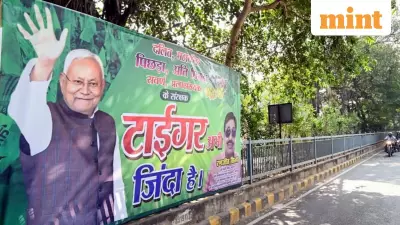
In a significant push for tribal welfare, the Uttar Pradesh government has rolled out the ambitious Dharti Aaba Janjatiya Gram Utkarsh Abhiyan and Dharti Aaba Janbhagidari Abhiyan. This initiative, part of the 150th birth anniversary celebrations of revered tribal icon Birsa Munda, is set to transform 517 tribal-dominated villages spread across 26 districts of the state.
Welfare Schemes Reach Every Tribal Household
A government spokesperson confirmed that these tribal areas have now achieved full saturation of key central and state welfare schemes. This means every eligible family now has access to the benefits of programs like Ayushman Bharat, Ujjwala, Jan Dhan, Kisan Samman Nidhi, and the PM Vishwakarma Yojana.
The initiative has already made a substantial impact, empowering over 11 lakh people from communities such as the Tharu, Buksa, and Bhotia. This empowerment comes through critical access to housing, education, healthcare, electricity, and clean drinking water, facilitated by initiatives like the PM Janman and the Mukhyamantri Awas Yojana.
In a landmark achievement highlighting the scheme's depth, 815 Buksa families living in forest areas now enjoy complete access to essential amenities, a first for many.
Preserving Heritage and Building Futures
Moving beyond basic amenities, the government is also focusing on preserving and promoting rich tribal cultural heritage. In Lakhimpur Kheri, the Tharu Handicraft Company has been established, successfully linking 371 self-help groups with national markets through revolving and community investment funds.
Further cementing this cultural push, a Tharu Museum has been inaugurated in Balrampur, with similar projects actively underway in Mirzapur, Sonbhadra, and Maharajganj.
Education is another cornerstone of this empowerment drive. Eklavya Model Schools, Sarvodaya Hostels, and Ashram Vidyalayas are nurturing a new generation of confident tribal youth. Schools in districts like Lakhimpur Kheri, Bahraich, Sonbhadra, and Lalitpur are providing holistic education to children from the most remote regions, creating a strong base for inclusive progress.
Creating Leaders and Including Nomadic Tribes
The results of this focused approach are already visible. Under the Pre-Examination Training Centre Scheme, over 700 Scheduled Tribe candidates have been selected for administrative roles. Simultaneously, 6,500 youth are currently being trained across eight high-level centres to prepare them for future opportunities.
The government has also thoughtfully extended these welfare schemes to include nomadic and semi-nomadic tribes such as the Nat, Banjara, Sansi, Kanjar, and Kalbelia. With a network of 101 Ashram Vidyalayas, nine Sarvodaya Schools, and multiple hostels, these historically marginalized communities are finally gaining meaningful access to education, housing, and social security.
An official summarized the transformative vision, stating, "From restoring dignity and identity to ensuring access to all government benefits, the Yogi Adityanath government has ushered in a new era of tribal empowerment, one that combines cultural pride with sustainable progress."





